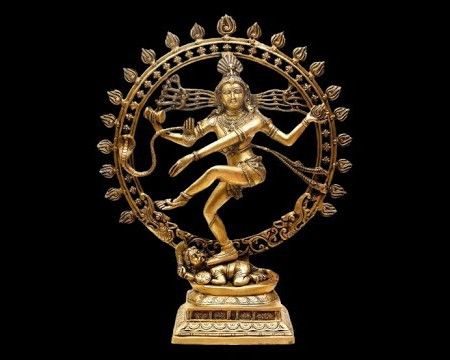Art of the Indus Valley: A Glimpse of the Past

A long time ago, around 2500–1900 BCE, there was a great civilization known as the Indus Valley Civilization. It lived in areas that are now part of Pakistan and India. These people were smart, and they created amazing things that show how talented they were in art, technology, and daily life. From beautiful sculptures to colorful pottery, the art of the Indus Valley gives us a glimpse of their world. Let’s take a closer look!
Amazing Sculptures: Art in Stone and Bronze
The people of the Indus Valley were skilled sculptors, and they made beautiful statues and figures from materials like stone and bronze.
The Dancing Girl
One of the most famous sculptures is a small bronze figure called the “Dancing Girl”. She is only about 10 centimeters tall, but she looks very confident as she strikes a dance pose. Her right hand is on her hip, and her left arm is covered with bracelets. This sculpture shows us that dance was likely an important part of their culture.
The Priest-King
Another important sculpture is of a man sitting with a serious face, wearing a special robe. This statue, called the “Priest-King,” might represent a ruler or a religious leader. His thoughtful expression shows that this person was important in society.
Small Clay Figures: Animals and People
The people of the Indus Valley also made many small clay figures, called terracotta figurines. These were made to look like people, animals, and gods.
Figurines of Women
Many of these small figures were of women with big eyes, elaborate hairstyles, and large bodies. Some of them might have been created to show fertility or the power of motherhood, which was very important to the people back then.
Animal Figurines
The Indus people loved animals too. They made clay models of bulls, elephants, and dogs, which were common animals in their society. The bull was especially important because it helped with farming and transportation. These animals might have also had a spiritual or religious meaning.
Seals: Special Stamps for Trade
Another cool thing the Indus Valley people created were seals. These were small, carved stones that looked like stamps. They were used to mark their goods when trading with other people.
The Pashupati Seal
One famous seal shows a figure sitting with animals around it. Some people think this might be an early image of the Hindu god Shiva. The animals in the picture could symbolize the connection between humans, nature, and the divine. The figure sitting in a relaxed position could be a god or priest.
The Unicorn Seal
Many seals show a unicorn, a one-horned animal. No one really knows what this creature meant, but it was probably important to their culture. The seals were likely used to stamp items for trade, so the pictures on them might have helped people know who the item came from.
Pottery: Beautiful and Useful
The people of the Indus Valley also made beautiful pottery. These pots and bowls weren’t just for decoration; they were used for cooking, storing food, and even for religious ceremonies. The pottery was made with care, and some pieces had patterns like fish, flowers, and geometric shapes. These designs could have had special meanings or simply been for decoration.
Black-on-Red Ware
One of the most common types of pottery was called Black-on-Red Ware. The pottery was painted with black patterns on a red background. Some of these patterns looked like peacocks or trees, which could have been important symbols for the people of the Indus Valley.
Jewelry: Adorning the Body
The people of the Indus Valley also loved jewelry. They made necklaces, earrings, bracelets, and beads out of precious stones, gold, and silver. These pieces were worn to look beautiful, but they might also have had special meanings.
Beads and Necklaces
The Indus people were amazing at making beads. They created them from materials like agate and turquoise and strung them into necklaces and bracelets. These beads were so well made that they were traded with people from other places, even in Mesopotamia (an ancient civilization far away).
Amazingly Planned Cities: Art in Architecture
The Indus Valley people didn’t just make art with small objects; they also built incredible cities. The cities were planned carefully with straight streets, public baths, and amazing buildings. The most famous city, Mohenjo-Daro, had a large Great Bath made of bricks, which might have been used for rituals or cleaning. The way the cities were built shows that the people of the Indus Valley had an eye for artistic design and organization.
Symbols in Their Art: What Did It All Mean?
The art of the Indus Valley wasn’t just for decoration. Many of the things they created had special meanings. For example, the bull might represent strength or fertility, and the unicorn could be a symbol of power or something magical. The people used art to show their beliefs and the importance of nature and gods in their
The art of the Indus Valley Civilization shows us how creative and smart these ancient people were. Even though we don’t know everything about their lives, their art speaks to us across thousands of years. From dancing figures to beautiful jewelry, the art of the Indus Valley is still admired today. It reminds us that art isn’t just about making things look pretty; it can also tell us stories about culture, beliefs, and daily life. The Indus Valley Civilization might have disappeared, but its art still inspires us, helping us understand their world a little better.